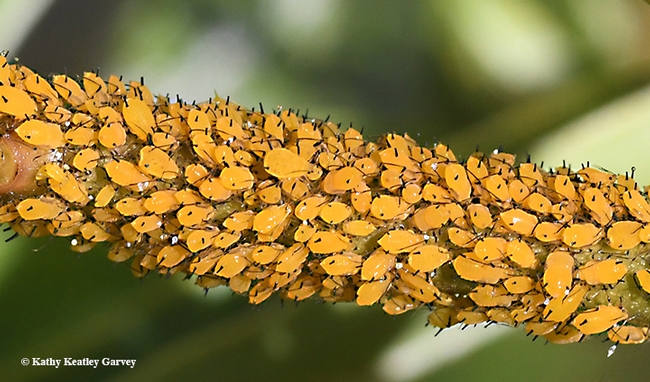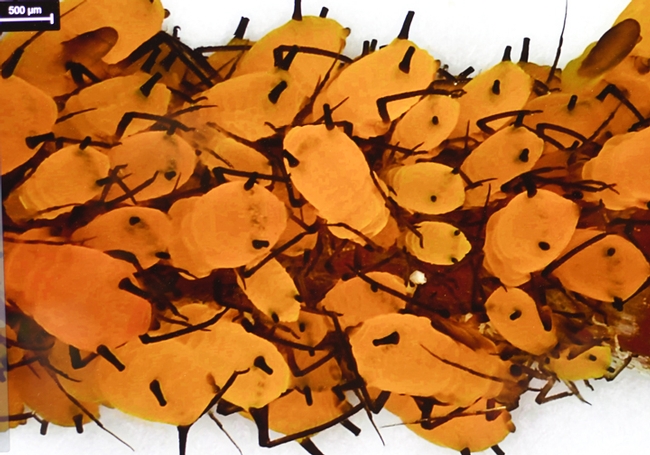
Especially those oleander aphids that suck the very lifeblood out of our milkweed plants that we're struggling to save for monarch butterflies.
Just call aphids "The Enemy of the Gardener" or "The Enemy of the Milkweed."
The University of California Statewide Integrated Pest Management Program (UC IPM) describes aphids as "small, soft-bodied insects with long slender mouthparts that they use to pierce stems, leaves, and other tender plant parts and suck out fluids. Almost every plant has one or more aphid species that occasionally feed on it."
"Aphids have soft pear-shaped bodies with long legs and antennae and may be green, yellow, brown, red, or black depending on the species and the plants they feed on," UC IPM tells us. "A few species appear waxy or woolly due to the secretion of a waxy white or gray substance over their body surface. Most species have a pair of tubelike structures called cornicles projecting backward out of the hind end of their body. The presence of cornicles distinguishes aphids from all other insects.
"Generally adult aphids are wingless, but most species also occur in winged forms, especially when populations are high or during spring and fall. The ability to produce winged individuals provides the pest with a way to disperse to other plants when the quality of the food source deteriorates."
Not only do aphids stunt plant growth but they can spread viruses. Plus, they produce that sticky honey dew they that attracts ants and other insects.
Density? We've seen aphids so dense on our milkweed stems that all we see is yellow. (Sometimes we see red!)
We recently saw them magnified on a Leica DVM6 microscope, operated by Lynn Epstein, UC Davis emeritus professor of plant pathology, at a demonstration in Hutchison Hall. (See image below)
In California, most aphids reproduce asexually throughout most of the year, according to UC IPM. Did you know that a single aphid can generate as many as 12 offspring a day--without mating?
Bring on the lady beetles (aka lady bugs), lacewings, and soldier beetles! The larvae of lady beetles and syrphid flies also do their part in gobbling up aphids.
What to do when biological control doesn't work that well? Or when your lady beetles depart? Pinch the aphids; spray them with with water; or spray them with a mixture of 1 tablespoon of dish soap (Castile liquid soap) and one quart of water. Some folks dab aphids with cotton swabs dipped in isopropyl (rubbing) alcohol but that will kill the monarch eggs and larvae as well. We've found that spraying a mixture of sudsy soap and water works best for us.
Lather is the best medicine.
Attached Images:

